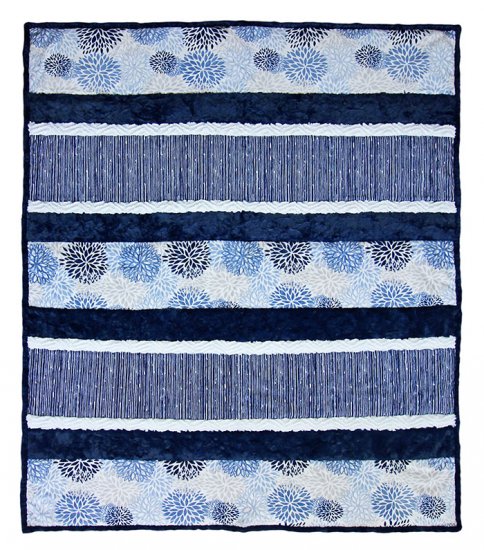
 Earlier this year, Shannon Fabrics announced Bluebell as their color of the year. The color of the year is chosen following design trends, and is a time every creative looks forward to.
Earlier this year, Shannon Fabrics announced Bluebell as their color of the year. The color of the year is chosen following design trends, and is a time every creative looks forward to.
Bluebell is known for evoking tranquil feelings and a sense of reassurance. In the age of the social this color seemed the right fit for what 2018 should be; a reminder to stop and smell the roses somewhere in our busy and ever-moving lives.
Bluebell has warm violet undertones and matches well with denim blues, navy, and dusty blue when used as the main focus. Bluebell also matches well with cooler purples (think along the lines of lavender), and neutrals like sand, beige, steel, and graphite.
Shannon Fabrics features the color in many of their patterns and has received positive feedback from choosing the relaxing hue. 
This compares to Pantone’s color of the year, Ultraviolet. Ultraviolet, a much deeper purple than Bluebell, is a color of vision, promoting originality that points to the future.
Unlike Bluebell, Ultraviolet features better as an accent. Search for colors to soften it, like purples, pinks, and blues. A vase of these shades of flowers look all the more lovely next to the powerful and emotion-evoking deep purple. If looking to use Ultraviolet, embrace a darker, more moody theme.
As we enter the second quarter of the year, try to look for opportunities to include the colors of the year into your products for a reminder to stay calm, cool, and collected while keeping your eyes on the prize.
If you’re looking for more information to guide you in owning a retail business, subscribe to American Quilt Retailer today. Already a subscriber? No worries—join our Facebook group for insights and dialogue from industry specialists like you.


 You heard it here first folks, Jaftex Corporation has announced their intent to purchase the one and only
You heard it here first folks, Jaftex Corporation has announced their intent to purchase the one and only 


 The interview was conducted by Stitchcraft Marketing CEO Leanne Pressly. After working for Interweave Press, Pressly decided to start her own website, The Wool Wide Web, in 2009. The website rebranded itself in 2013 and transformed into Stitchcraft Marketing.
The interview was conducted by Stitchcraft Marketing CEO Leanne Pressly. After working for Interweave Press, Pressly decided to start her own website, The Wool Wide Web, in 2009. The website rebranded itself in 2013 and transformed into Stitchcraft Marketing.



 You heard it here first folks—Marcia Barker has been named the new Director of Education for the International Quilt Festival and Quilt Market.
You heard it here first folks—Marcia Barker has been named the new Director of Education for the International Quilt Festival and Quilt Market.

 If you have had any success making a change in your business, and reaped the benefits financially, we’d love to hear about it! Contact American Quilt Retailer through our Facebook page today.
If you have had any success making a change in your business, and reaped the benefits financially, we’d love to hear about it! Contact American Quilt Retailer through our Facebook page today.










